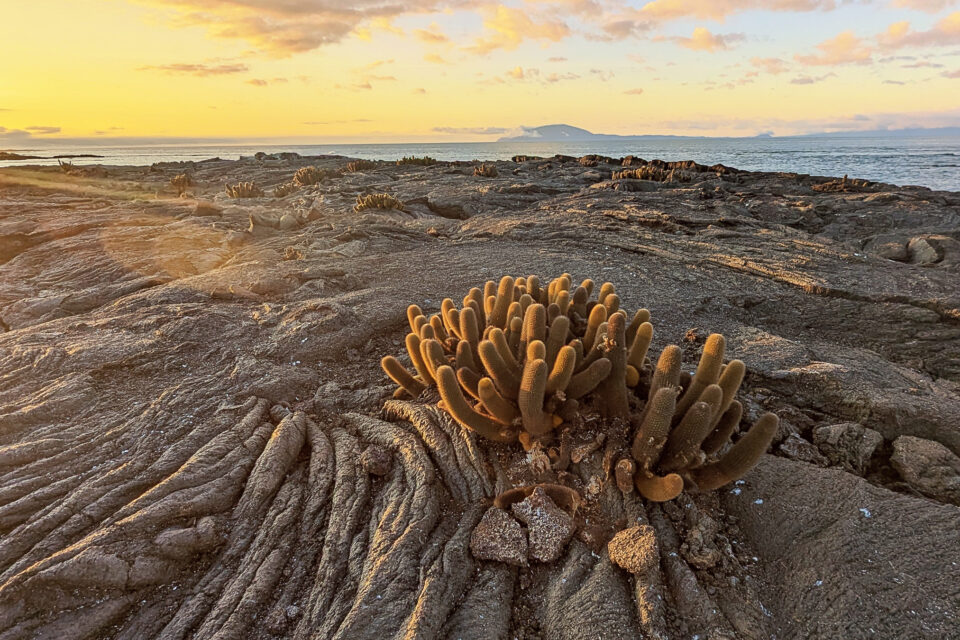

What can you do this Earth Day?
There are many pressures facing the Galapagos Islands including industrial fishing, climate change, plastic pollution and invasive species. Here are some ideas to be more sustainable this Earth Day.
There are many pressures facing the Galapagos Islands including industrial fishing, climate change, plastic pollution and invasive species. At Galapagos Conservation Trust, we understand that to achieve our vision and mission in Galapagos we need to appreciate the global impacts of our collective and individual behaviours. There are so many different ways we can reduce our waste and carbon footprint so it can sometimes feel overwhelming. Remember, we don’t need a handful of people living perfectly sustainable lives. We need millions of people doing it imperfectly. Choose a few achievable actions, then slowly add more as you master them. Here are some ideas for what you can do this Earth Day.
Complete our Earth Day quiz to find out how much you know about threats to the Galapagos Islands, as well as be in with a chance to win a digital adoption of your choice!

Some top tips to reduce what you buy to use at home and in the office:
- Why not undertake a plastic audit in your home or office and find out how much plastic you are using and throwing away? Are there any single-use plastic items you can replace with plastic-free versions?
- Always carry a reusable water bottle and coffee cup.
- Take reusable shopping bags with you – even if you don’t intend to buy anything.
- Replace your household cleaning products with low waste alternatives like soap bars or dissolvable tablets.
- Choose digital magazines over postal subscriptions. Top tip: save money too by checking out the digital magazine selection from your local library!
 One of the easiest ways to reduce your carbon footprint is to increase the proportion of plant-based foods in your diet as 26% of global greenhouse gas emissions come from food production. A high-meat diet produces 2.5x more greenhouse gases than a vegan diet.
One of the easiest ways to reduce your carbon footprint is to increase the proportion of plant-based foods in your diet as 26% of global greenhouse gas emissions come from food production. A high-meat diet produces 2.5x more greenhouse gases than a vegan diet.
Some top tips to reduce your carbon footprint:
- If you’re not already following a high plant-based diet, try swapping your lunches or a few evening meals a week to vegetarian or vegan.
- Grown your own vegetables at home. If you don’t have much space, some vegetables like potatoes or salads can be grown in pots or window boxes.
- Buy locally grown produce and shop with local suppliers.
- Why not try a veg box? As well as helping you get a variety of fruits and vegetables in your diet, many are plastic-free and locally produced.
- Sign up for a milk bottle delivery service, some now even sell oat milk in reusable glass bottles.

- Try taking the stairs not the lift.
- Remember the five R’s: Refuse, Reduce, Reuse, Repair and Recycle.
- Try to pick up any litter or rubbish you find in your local area, particularly along coastlines or waterways.
- Try to reduce the number of trips you take in the car. Could you walk, cycle or take public transport instead?
- Switch off lights, your electrical equipment and plug sockets when you’re not using them.

- Sign up to our eNewsletter and follow us on social media: Twitter | Facebook | Instagram | LinkedIn
- Sign up to our Galapagos-Cocos Swimway Challenge – we’re challenging you to swim, walk, run, cycle, or wheelchair the length of the proposed Galapagos-Cocos Swimway route – 1125km or 700 miles – to raise money towards our vital work.
- Become a GCT member: Without our members, we could not fund the crucial research and fieldwork that the Galapagos Islands so desperately need.
- Swap gifts for experiences such as tickets to events, days out or charity adoptions. GCT offer a range of endangered Galapagos animal adoptions for you to gift to yourself or your loved ones.
- Use GCT’s home learning plastic resources with your children to raise awareness of plastic pollution and inspire them to make sustainable choices.
- Leaving a legacy to GCT in your Will is a great way in which you can have a direct and positive impact on the Archipelago for years to come.
Related articles


Climate change and plastic pollution: the inextricable link

Santa Cruz: The Evolution of the Agricultural Zone


